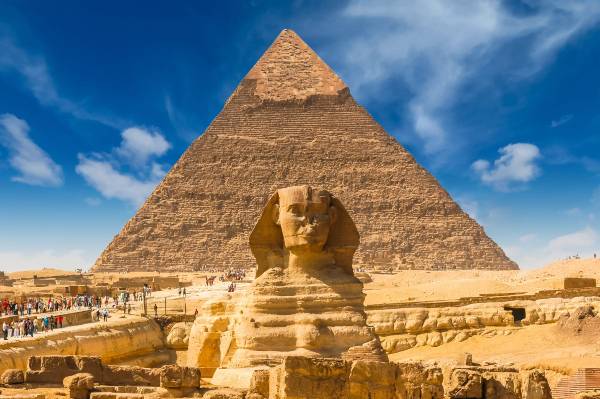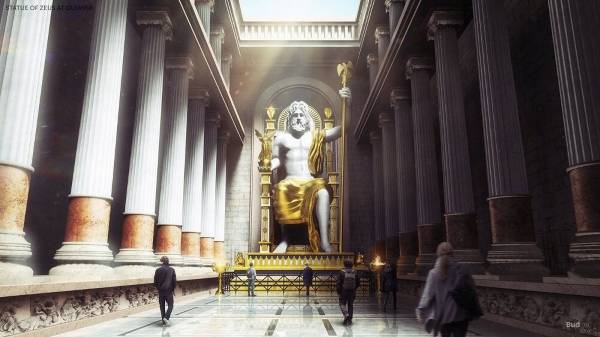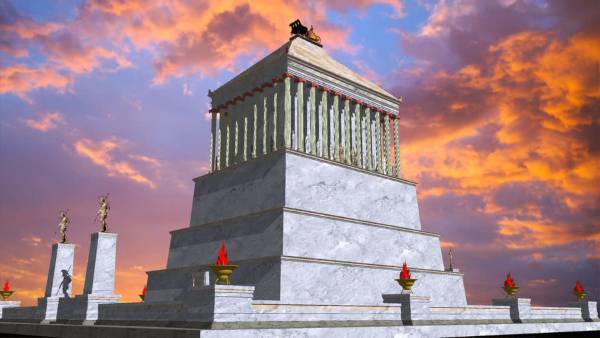The Seven Wonders were first defined as themata for Hellenic sightseers by Philo of Byzantium in 225 BCE, in his work On The Seven Wonders. Amongst all the mentioned wonders, only the Great Pyramid exists out of the list today. Here we list the seven wonders of the ancient world.
Temple of Artemis at Ephesus, Turkey

The most wonderful monument of Grecian magnificence was dedicated to Artemis, the Greek goddess of hunting and nature. Back in the day, the temple was 425 feet (129m) in length and 225 (68m) wide. Attacked several times, it was initially deliberately razed to the ground in 356 BC by notorious Greek arsonist Herostratus. After being rebuilt, it was destroyed once again in AD 262 during a raid by the Goths. Today only the foundations and a single column remain.
Colossus of Rhodes, Greece

The gigantic Colossus of Rhodes took a whopping 12 years to come to life as the bronze sculpture of the Greek god Helios stood in Rhodes at 105 feet (32m) height. Originally created by artist Chares of Lyndus, the spectacular art was a celebration of the unsuccessful besiege of Rhodes. Later, it was destroyed by an earthquake and left in a state of disrepair for another 800 years. Finally, it was melted down and sold for scrap metal during the 7th century.
Great Pyramid of Giza, Egypt

Great Pyramid, often known as the Pyramid of Khufu, still stands tall basking in glory along with three pyramids, Khufu, Khafre and Menkaure in northern Egypt. Constructed as a tomb for the Egyptian pharaoh Khufu, it took 20 years to build and about 20,000 workers. Approximately 2.3 million blocks of limestone, each probably weighing between 2.5 to 15 tons, were cut, transported and crafted to create a structure that likely weighs 5.7 million tons. Over the years, it’s been the victim of erosion, shrinking from 481 feet (147m) originally, to 451 feet (138m) today.
Hanging Gardens of Babylon, Iraq

The mysterious hanging gardens have a beholding beauty to them. The fabled gardens are believed to have been situated near the royal palace in Babylon. The gardens are thought to have been built by Emperor Nebuchadnezzar during his reign sometime between 605-561 BC, for his wife Amytis. Classical writers describe the Hanging Gardens as being built using stone and look like a tiered mountain. Exotic plants and trees overhung the walls, hence the “hanging”. Lack of evidence has led to people believing it is a myth.
Lighthouse of Alexandria, Egypt

The Lighthouse of Alexandria is probably the most famous warning beacon of all time. Located on the islet of Pharos, it is said to be more than 360-feet (110m) high and built between 300-280 BC. Likely the second tallest human-built structure in the ancient world, after the pyramids of Giza, it stood for around 1,600 years. Three earthquakes between AD 956 and 1333 badly damaged the lighthouse.
Statue of Zeus at Olympia

The Statue of Zeus at Olympia was erected at the Temple of Zeus by the Eleans in an attempt to outshine the Athenians. As per the history literature, it seems to have lasted a few hundred years. Unfortunately, the statue likely perished when it was destroyed in 426CE or a few years later in a fire at Constantinople.
Mausoleum at Halicarnassus

Mausoleum at Halicarnassus was built for Mausolus, ruler of Caria, an ancient region of Asia Minor. Mausolus commissioned many great temples and civic buildings in his life and planned the Mausoleum himself. The structure was a mixture of Greek, Near Eastern and Egyptian design principles set in Anatolian and Pentelic marble. The tomb was excavated, sacrificial remains of oxen, sheep.
Credit: https://www.budgetdirect.com.au/blog/the-7-wonders-of-the-ancient-world-reconstructed.html














